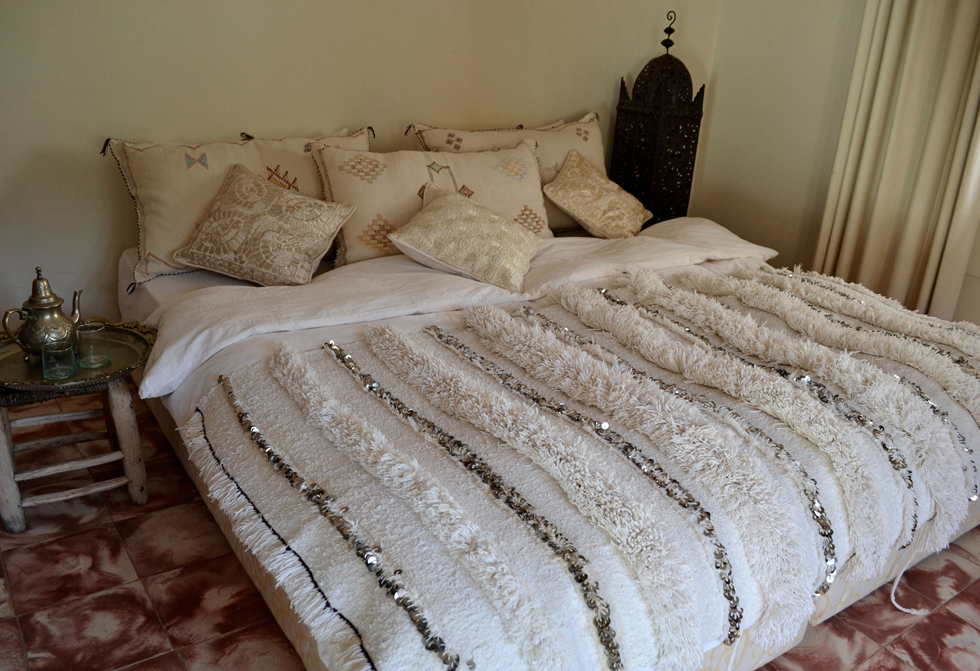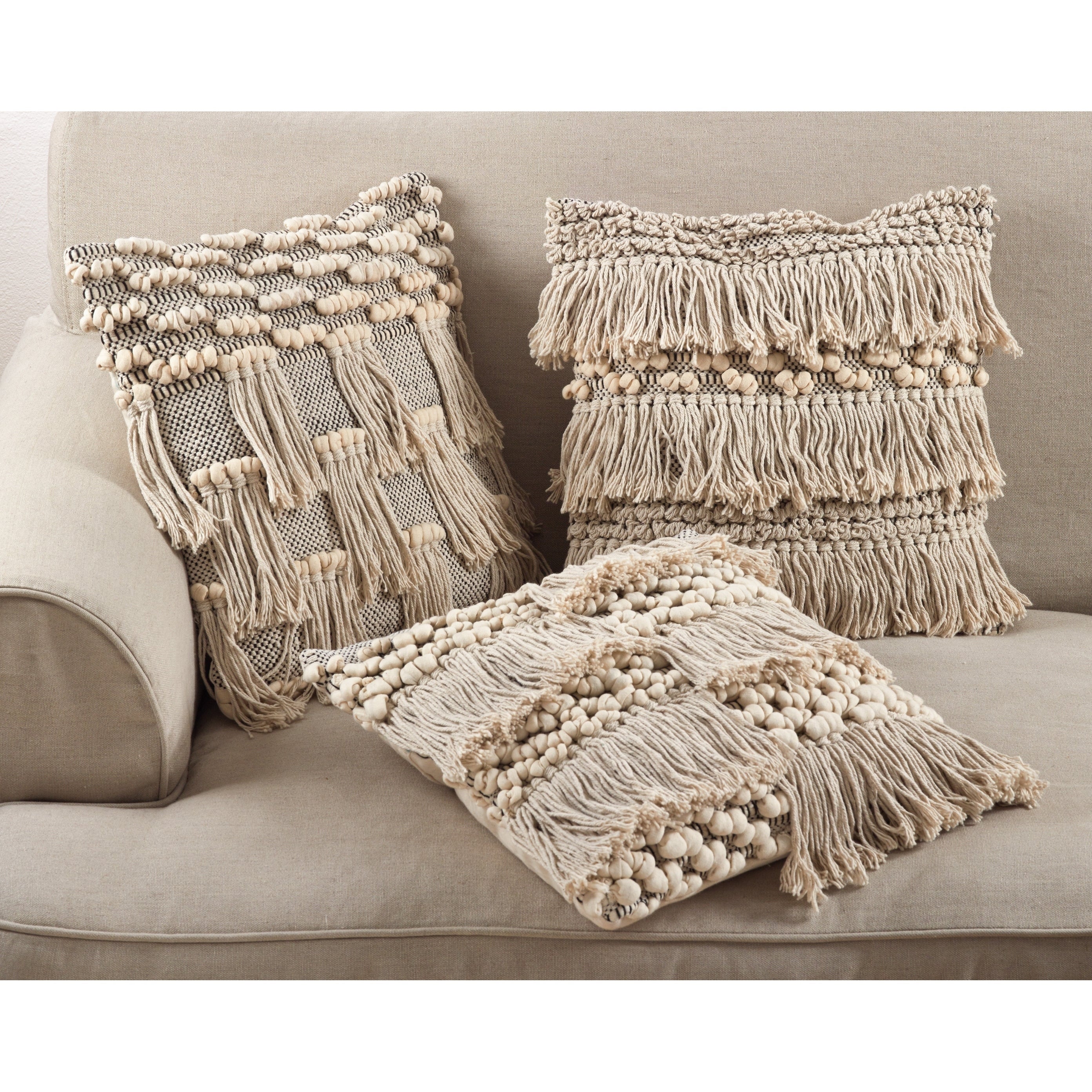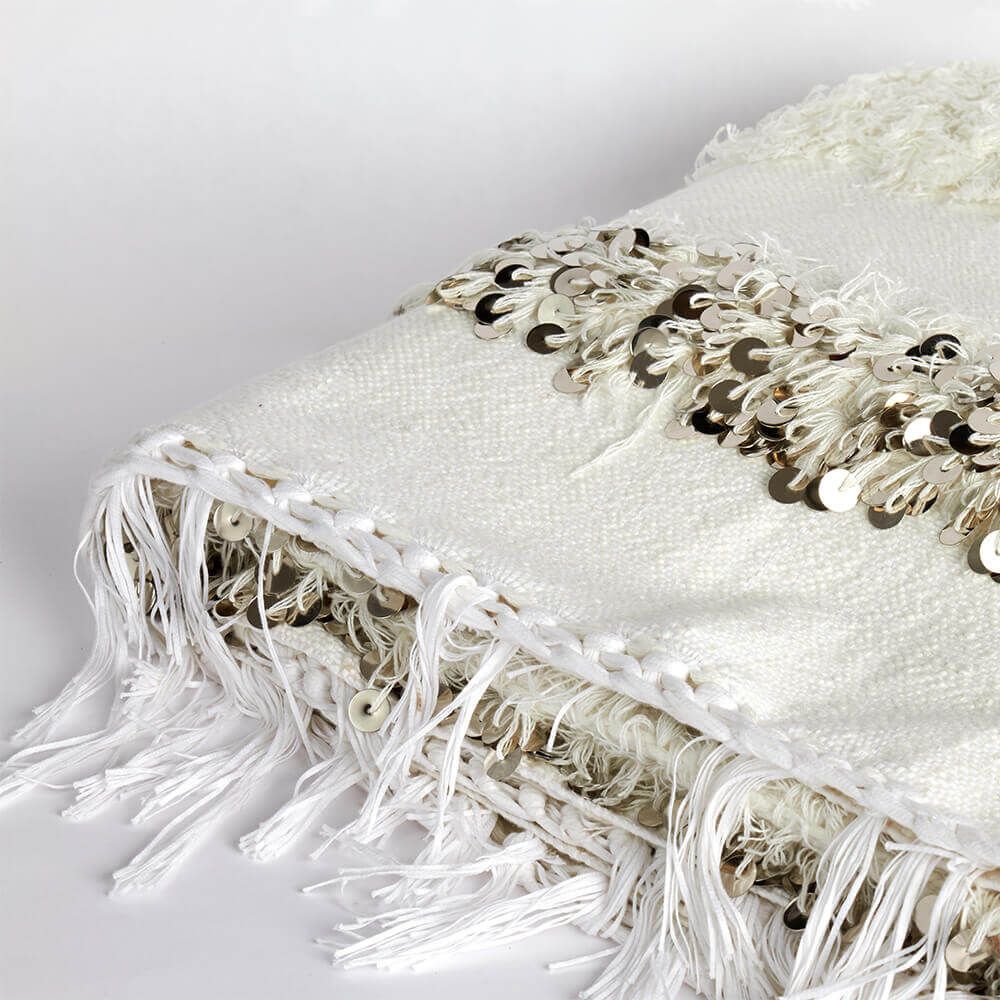Moroccan Wedding Blanket

The Moroccan wedding blanket, also known as a handira, is a traditional piece of Moroccan craftsmanship that is intricately woven and embroidered by hand. The blanket is typically made of wool or cotton and is decorated with colorful Berber motifs. The handiras are used as a wedding gift to the bride and groom, and they are often passed down through generations.

The weaving process of the handira is a time-consuming and laborious task. The wool or cotton is first spun into yarn, which is then dyed using natural dyes. The yarn is then woven into a blanket on a loom. The embroidery is then added using a needle and thread. The motifs used in the embroidery often have symbolic meanings, such as fertility, protection, and good luck.

The handira is a beautiful and unique piece of Moroccan craftsmanship. It is a symbol of tradition and culture, and it is a cherished heirloom for many Moroccan families.
Here are some of the main characteristics of a Moroccan wedding blanket:
- They are typically made of wool or cotton.
- They are intricately woven and embroidered by hand.
- They are decorated with colorful Berber motifs.
- They are used as a wedding gift to the bride and groom.
- They are often passed down through generations.
If you are interested in purchasing a Moroccan wedding blanket, there are a few things to keep in mind:
- The price of a handira will vary depending on the size, quality, and craftsmanship.
- You can find handiras for sale in Morocco or online.
- When purchasing a handira online, be sure to do your research to find a reputable seller.
Here are some tips for caring for your Moroccan wedding blanket:
- Dry clean only.
- Do not bleach.
- Do not iron.
- Store in a cool, dry place.## Moroccan Wedding Blanket
Executive Summary
The Moroccan wedding blanket is a traditional and versatile piece of textile that holds significant cultural and practical value in Moroccan weddings. Its intricate designs, vibrant colors, and luxurious fabrics create a stunning visual impact that enhances the celebratory atmosphere. This comprehensive guide delves into the history, symbolism, craftsmanship, and contemporary uses of the Moroccan wedding blanket, exploring its unique characteristics that make it an essential element of Moroccan marriage customs.
Introduction
The Moroccan wedding blanket, known as a handira, is a vibrant and captivating symbol of love, fertility, and prosperity in Moroccan culture. Handcrafted with meticulous attention to detail, each blanket exhibits unique patterns, colors, and embellishments that carry deep cultural significance. From its historical origins to its modern-day applications, the Moroccan wedding blanket remains an integral part of Moroccan wedding traditions, adding an aura of elegance and authenticity to the occasion.
FAQs
Q: What is the significance of the Moroccan wedding blanket?
A: The Moroccan wedding blanket holds multiple meanings: it symbolizes the union of two families, represents wealth and prosperity, and serves as a protective charm against evil spirits.
Q: What are the common materials used in Moroccan wedding blankets?
A: Moroccan wedding blankets are typically made of wool or cotton, featuring a plush and soft texture.
Q: What is the traditional size of a Moroccan wedding blanket?
A: The dimensions of a Moroccan wedding blanket vary, but they generally range from 5 to 8 feet in length and width.
Subtopics
History and Origins
The origins of the Moroccan wedding blanket can be traced back centuries to nomadic tribes who used blankets for warmth and protection. Over time, these blankets evolved into elaborate pieces of art, adorned with intricate patterns and vibrant colors that reflected the region’s cultural heritage. The significance of the blanket as a symbol of marriage solidified during the 17th century, when it became a customary gift from the groom’s family to the bride.
- Tribal Influences: Nomadic tribes played a crucial role in developing the unique designs and craftsmanship of Moroccan wedding blankets.
- Geographical Variations: Different regions of Morocco have distinct styles of wedding blankets, showcasing local cultural influences and artistic traditions.
- Social Significance: The wedding blanket became a symbol of social status and wealth, with more elaborate blankets denoting greater affluence.
Craftsmanship and Techniques
Moroccan wedding blankets are renowned for their exceptional craftsmanship, which involves meticulous handweaving and intricate embroidery. Skilled artisans spend countless hours creating these masterpieces, using traditional techniques passed down through generations.
- Handweaving: The base of the blanket is woven on a loom using wool or cotton threads, creating a durable and plush fabric.
- Embroidery: Once the fabric is woven, artisans embroider intricate designs using vibrant threads. Common motifs include geometric patterns, Berber symbols, and natural elements.
- Materials: The quality of the wool or cotton used influences the softness, warmth, and durability of the blanket.
Symbolism and Meaning
The Moroccan wedding blanket carries profound symbolic meanings that enhance its significance in marriage ceremonies. Its colors, patterns, and embellishments convey specific messages and evoke emotions.
- Fertility and Prosperity: The vibrant colors and geometric patterns represent fertility and abundance, wishing the couple a prosperous future.
- Protection: The blanket is believed to protect the couple from evil spirits and negative energies, ensuring their well-being and happiness.
- Unity and Harmony: The intricate embroidery symbolizes the union of two families and the harmonious blending of their traditions.
Contemporary Uses
While traditional customs and beliefs surrounding the Moroccan wedding blanket endure, its uses have evolved in contemporary times. It has become a versatile piece that transcends its original purpose.
- Home Decor: Moroccan wedding blankets are now widely used as decorative accents in homes, adding a touch of ethnic charm and warmth to various spaces.
- Fashion and Accessories: Designers incorporate elements of Moroccan wedding blankets into fashion items, such as shawls, scarves, and handbags, showcasing the blanket’s aesthetic appeal.
- Cultural Symbol: The Moroccan wedding blanket has become a symbol of Moroccan culture, representing its rich heritage and vibrant artistry.
Conclusion
The Moroccan wedding blanket is more than just a piece of fabric; it is a captivating tapestry that weaves together history, culture, and personal significance. Its intricate designs, vibrant colors, and exceptional craftsmanship make it a treasured possession that embodies the essence of Moroccan marriage traditions. Whether adorned as a ceremonial blanket or repurposed as a decorative accent, the Moroccan wedding blanket continues to captivate hearts and inspire appreciation for the beauty of Moroccan heritage.
Keyword Tags
- Moroccan wedding blanket
- Handira
- Berber blanket
- Moroccan textiles
- Wedding traditions






